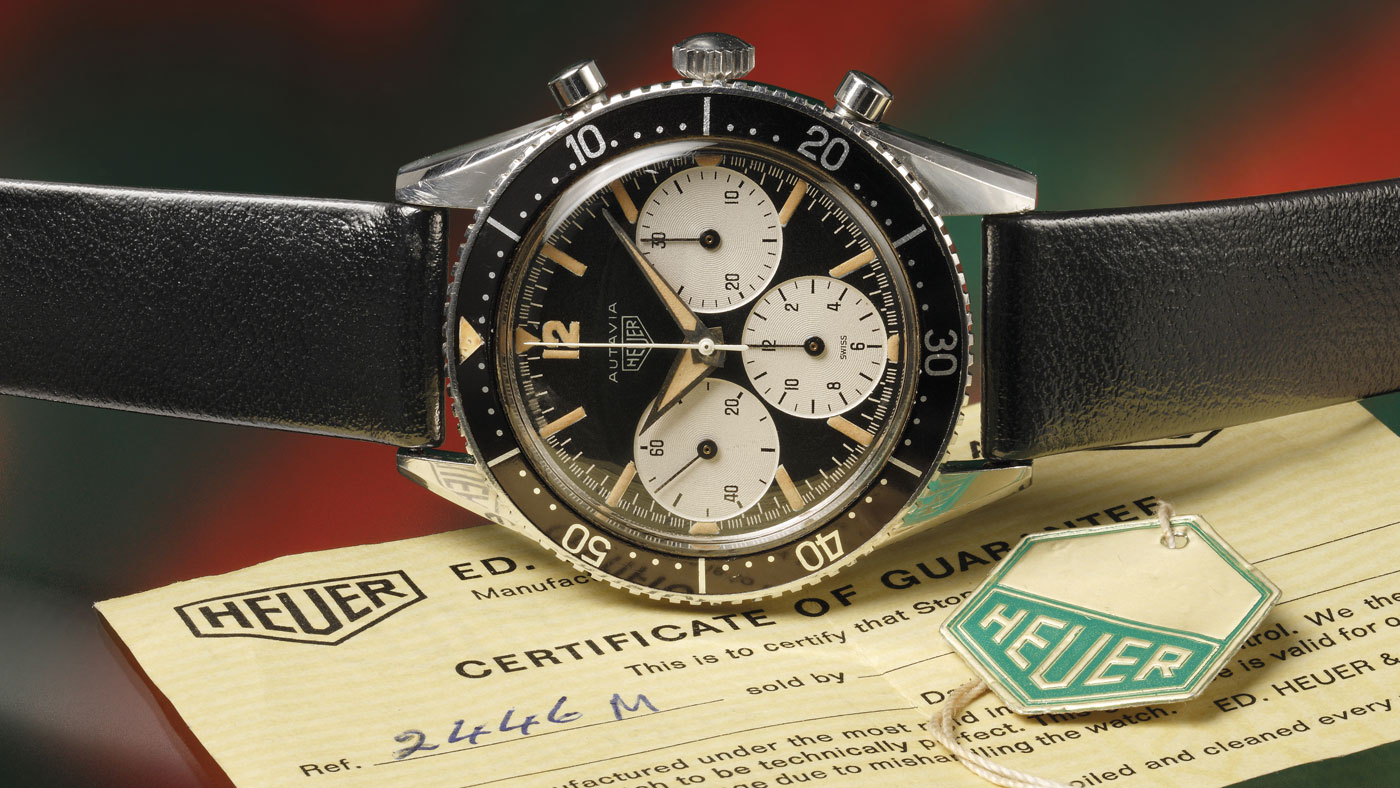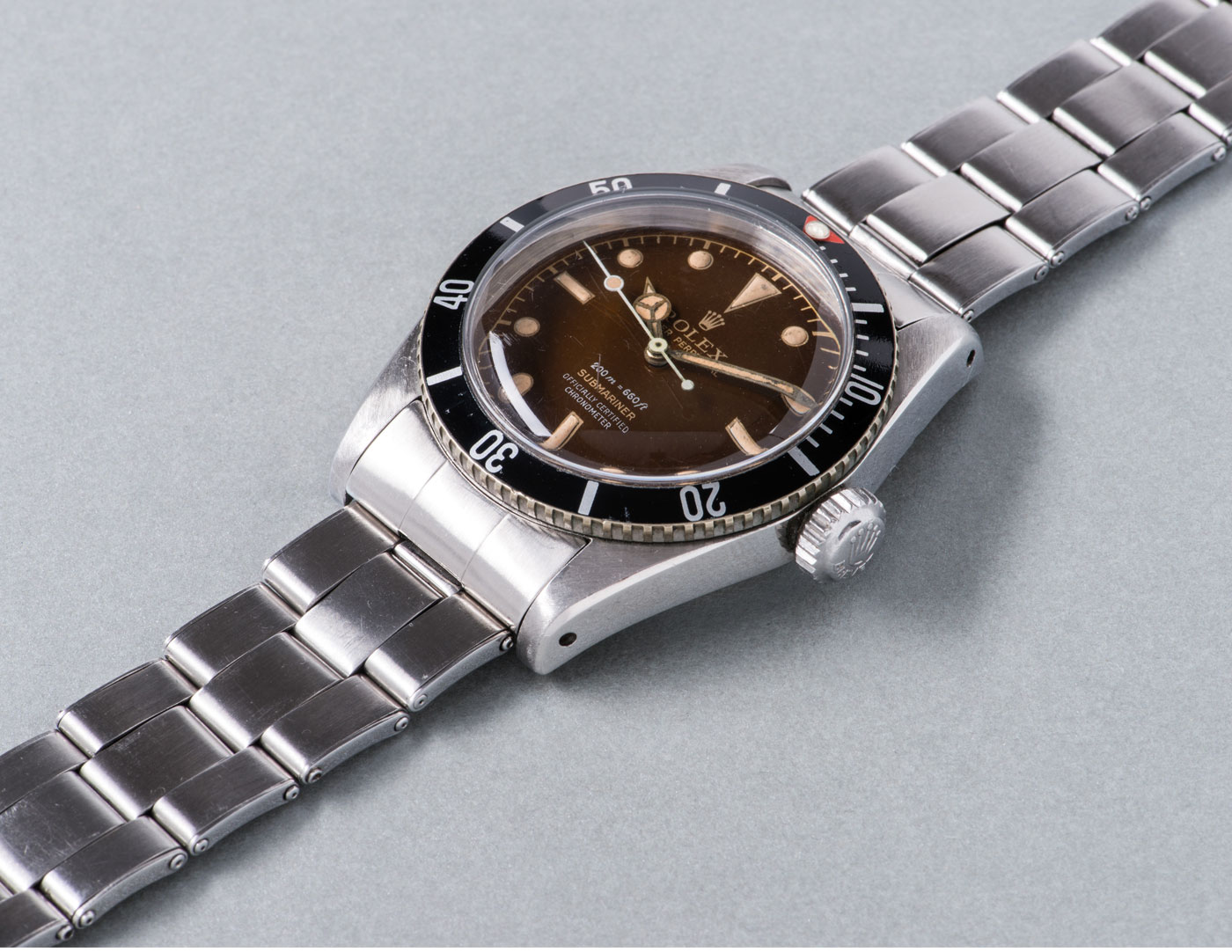Vintage watches: how to spot the record-breakers of the future

What is it with watch collecting? When Paul Newman’s Rolex Cosmograph Daytona sold for $17.8million last year, the news made front pages around the world, but the sale was an exception, saying little or nothing about the market or collectors. Looking at the headlines from watch auctions held by the likes of Bonhams, Christie’s and Sotheby’s, it’s easy to assume that collecting watches is simply a matter of acquiring the rarest pieces from Patek Philippe and Rolex that you can get your hands on. But there’s so much more to the collecting world than that. While the two major brands dominate the pre-owned market, both in terms of volume and value, they’re not the only stories around, and even if you stick with them, there’s more variety and opportunity than you might think.
It’s worth looking at why Rolex is so popular in the first place. Part of the answer lies in the value of the brand today – it consistently tops surveys of brand satisfaction and trust around the world – but its popularity defines many of the reasons why people collect watches in the first place. Rolex is perceived as the original ‘tool watch’ brand, developing practical kit for serious, functional needs: the Submariner for divers, the Milgauss for engineers working in strong magnetic fields, and the GMT-Master for pilots working across time zones. These are the watches that epitomised the glamour of post-war exploration.
A good example of this is the high value placed on the Submariner watches that Rolex supplied to COMEX, a professional diving operation that developed many of the techniques in use today. These command a premium simply for being more ‘tool’, more professional, and values go up significantly if there’s paperwork linking a watch to a particular diver and his work – it’s not uncommon to see log books and correspondence from COMEX bundled with the watch.
The Week
Escape your echo chamber. Get the facts behind the news, plus analysis from multiple perspectives.

Sign up for The Week's Free Newsletters
From our morning news briefing to a weekly Good News Newsletter, get the best of The Week delivered directly to your inbox.
From our morning news briefing to a weekly Good News Newsletter, get the best of The Week delivered directly to your inbox.
Then it’s about detail. Rolex constantly evolved the designs, tweaking details to better perform their functions, but also making slight aesthetic changes as parts from different suppliers were incorporated into production. Whether its crown guards or slight changes to the Rolex logo, minor details can add up to extreme rarity and value – the right ‘Bart Simpson’-style Rolex crown on the dial can add £50,000 to the value of a watch. And consider this: a 1965 Rolex Submariner reference 6538 can jump in value from around £20,000 (with a newer service replacement dial) to more than £300,000 (with the rarest format original dial in good condition), and even without a dial it might be worth £12,000.
More than the value, though, these details feed the collector’s obsession. With Rolex, there’s the opportunity to complete sets of variations, discover and verify unknown versions, and track the development of particular models.
There’s a wealth of expertise and knowledge out there to work with, and the occasional opportunity to deploy that obsession to valuable effect. Caveat emptor, though: those same values have drawn sharks to the water, and fakes of all sorts and levels of sophistication abound.
The sheer popularity of Rolex has driven up prices to the point that many collectors simply find more interest, opportunity and value elsewhere. Naturally enough, the most actively sought brands are Rolex’s competitors from the 1950s and ’60s, such as Breitling, TAG Heuer, Longines and Omega, and while prices are increasing they’re a long way short – a near- pristine Heuer Carrera might cost £15,000 as opposed to a bare minimum of £35,000 for a Daytona of the same age (let alone a Paul Newman-dial Daytona).
A free daily email with the biggest news stories of the day – and the best features from TheWeek.com
This disparity owes far more to the dynamics of collecting than any intrinsic difference – particularly as many of these watches were made using the same movements as their Rolex equivalents, with components such as dials and cases from the same sources. With these brands, there’s plentiful information available through books, forums and dealers; good support from the watchmakers themselves in terms of archive access, and, with prices rising, more pieces are coming onto the market. As Jonathan Scatchard of vintageheuer.com puts it, “The combination of a great brand story [Heuer was one of the most innovative brands of the ’60s and had a unique link to motorsport], accessible values and smaller numbers make collecting Heuer more fun.” And it’s worth noting that the smaller size of these collecting markets (and the comparative absence of sharks) for these brands also makes for a better community feel – passion is more important than profit.
For those who rate historical significance higher than brand identity or design, the most fertile ground is within the world of military watches. By definition, these are pure ‘tool watches’, as likely to be produced by otherwise obscure makers as by the established brands. A case in point is the group of makers who produced watches to a War Office specification in the ’40s. WWWs – the name stands for ‘Watch. Wrist. Waterproof ’ – had to be precise (regulated to chronometer level), legible and rugged. Black-dialled with Arabic numerals, luminous markers and subsidiary seconds, the WWWs were marked with army stores numbers and the ‘broad arrow’ to mark them as Crown property.

The twelve companies that supplied these timepieces – known to collectors as the ‘Dirty Dozen’ – include the likes of Jaeger-LeCoultre, IWC and Breitling, but also makers such as Grana, Buren and Vertex, which disappeared from the industry during the post-war years. Satisfyingly, all the watches can be found with luck and patience (though the Grana is said to be very rare and hard to find) and all show subtle differences in their interpretation of the War Office standard. The timepieces were owned and maintained by the army, and serviced without regard to which particular maker was on the dial, so don’t be surprised to find watches with the ‘wrong’ hands or unbranded dials – all meat and drink to the committed collector. Military requirements were a key driver of watch design and technology from the ’30s onwards, particularly for divers and pilots: Panerai came into existence purely through naval contracts, while the Rolex ‘MilSub’ and Omega Seamasters produced for the Royal Navy from the ’50s represented important contracts that encouraged the companies to innovate and compete.
Other collecting subcultures continually emerge as aficionados realise there’s untapped value in Seiko diving watches, or discover the variety of special editions that Breitling created for the aviation industry. Glance through catalogues from the likes of Watches of Knightsbridge, Phillips and Bonhams, however, and you’ll see that collecting need not be bound by any particular limitation of brand or purpose – who wouldn’t be beguiled by a Jaeger-LeCoultre Memovox from the early ’70s, or a Vacheron dress watch from the ’50s? These are watches that are simply enjoyable in themselves, speaking of the time, the place and the culture they come from. So whether it’s a matter of seeking out something a little different or deep-diving into military watch niches, there’s a cornucopia of delights waiting to be discovered.

